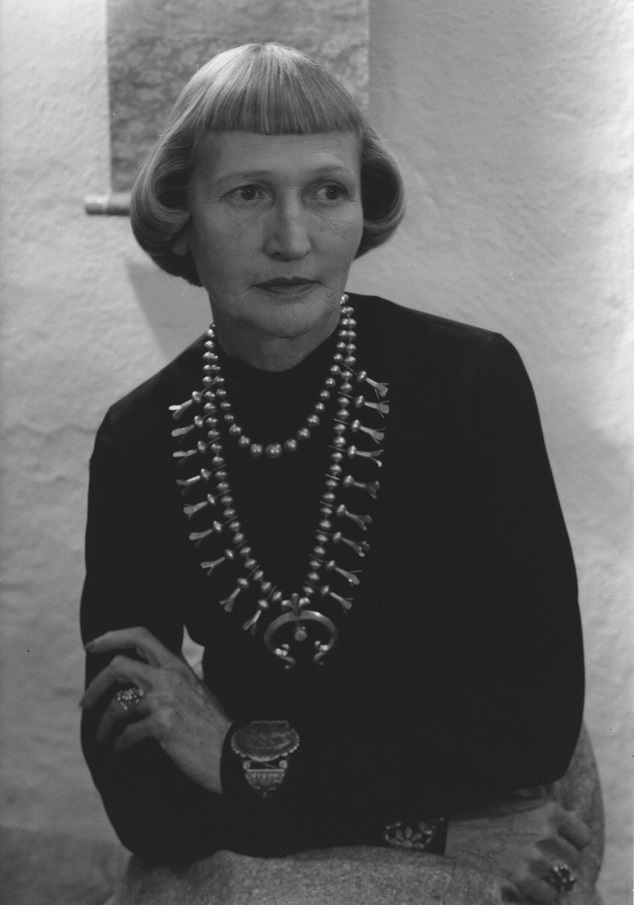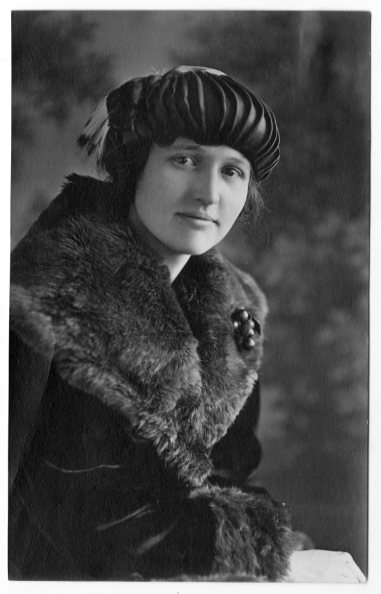An artist and educator, Anna Keener Wilton1 had a dynamic and successful career in both fields. As an artist, she was one of the few female Western American painters of her generation. As an arts educator, she dedicated her career to creating and advancing art programs and curricula in every place she taught, from grade schools to universities in Arizona, Kansas, Texas, and New Mexico.
Keener Wilton’s arts career commenced in college. Indeed, she would remain a highly ambitious art student for the majority of her profession—she never stopped learning, studying at multiple schools and earning advanced degrees. She got her start with help from artist Birger Sandzén, her teacher at Bethany College. Like her mentor, Keener Wilton made the Western landscape her primary subject. Sandzén propelled Keener Wilton as an emerging artist into the national spotlight by including her work in his highly regarded exhibition programs alongside well-known American and Southwestern artists, including members of the Taos Society of Artists.
While her artistic career was taking off, Keener Wilton also launched her teaching career. Keener Wilton joined the military after college graduation and after one year of service, returned to Bethany as Sandzén’s teaching assistant for the 1919–1920 school year.
In 1920, her professional interests and ambitions led her to the Southwest. She accepted a position supervising the public school’s art program in Globe, AZ. There, she cultivated a lifelong interest in Native arts and cultures, taking weekend excursions in a Model T Ford to explore the nearby San Carlos Apache and Fort Apache reservations, witnessing dances and cultural events, and collecting pottery, weavings, and baskets.
At her parents’ insistence—they were worried about Globe’s remote location—Keener Wilton returned to Kansas in 1921, taking a job as the Kansas City High School art director. She taught there for three years, and, in 1923, her short textbook Spontaneity in Design was published. Keener Wilson also married in 1923 and the next year, the young couple moved to Texas, with Keener Wilton taking a position at the Sul Ross State Teachers College in Alpine. Keener Wilton actively created and exhibited new work through all of these adventures and transitions—she mostly continued painting and also developed a printmaking practice. Her career took a three-year pause in 1926, however, after she gave birth to twin daughters.
Keener Wilton moved with her family to New Mexico in 1934 and taught at rural elementary schools in the northeast and central parts of the state for four years. In 1938, she divorced and in 1939, Keener Wilton moved to Gallup, NM, where she began teaching in mining camp schools, initiating art appreciation lessons by creating an “art spot” in each classroom showing a full range of arts and crafts. In November of that year, Keener Wilton took eighty-seven grade schoolers on an art outing around Gallup, ending with a visit to artist Lloyd Moylan at the historic McKinley County Courthouse while he was finishing his New Deal mural commission. While in Gallup, Keener Wilton also taught at the Gallup Art Center and at Gallup High School. As she was working on her own mural, Zuni Pottery Makers, in the Courthouse in 1942, the opportunity arose for her to teach at Eastern New Mexico University (ENMU) in Portales.
Keener Wilton headed ENMU’s art department for more than a decade. During that time, she also pursued her MFA at the University of New Mexico (earned in 1951), focusing her studies on issues of public art education and Pueblo pottery, and a second Master’s degree in art education at the Colorado State Teachers College.
After her retirement in 1953, Keener Wilton moved to Santa Fe, NM, and continued producing and exhibiting art. She also actively participated in professional and social organizations, holding leadership positions with the New Mexico chapter of the American Association of University Women and the New Mexico Federation of Women’s Clubs. As president of the Santa Fe chapter of the Artists Equity Association, she helped found the New Mexico Arts Commission (established by state statute in 1965) and lobbied President Lyndon Johnson to create a National Council for the Arts.
Toward the end of her life, Keener Wilton received several honors, including the Distinguished Alumna of Bethany College award in 1968 and the Santa Fe chapter of Delta Kappa Gamma’s Woman of the Year award in 1975. In 1970, New Mexico Governor David Cargo purchased one of her paintings (Questa) to hang in the gubernatorial mansion.



